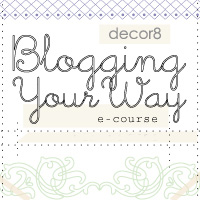A Crown for the Birthday Queen
 Saturday, February 28, 2015 at 9:59PM
Saturday, February 28, 2015 at 9:59PM 
Sometime shortly before Christmas I was having coffee with some of the moms from our school and one of them mentioned that they have started the tradition of giving only hand made gifts for the holiday. I was so impressed with this idea, and it made me realize that with all of the making that I do, my kids and husband aren't often the beneficiaries. I'm going to work on that.
The youngest girl in this hand-making family is one of my youngest son's favorite classmates and, when her birthday rolled around this month, I did not want to miss the opportunity to make something wonderfully girly as a gift. After all, I suspected that this was one kid who would appreciate something handmade.
Earlier this fall I purchased the pattern Queen of the Party by The Quilted Fish which includes patterns for party hats and crowns. I am always on the look out for patterns and embroidery designs that can be used for imaginary play long after the party is over (these masks that I made for friends fit that bill, too). The embellishment possibilities for these hats are limitless. The instructions give some ideas but this is a spot to really unleash your creativity.

The pattern calls for a gathered cotton ruffle along the upper edge of the crown but I pulled out a piece of ribbon trim and used that. The ruffle strip topped with buttons was created with two stacked strips with pinked edges. Silk flower petals and more buttons finished off the bling. This was quick to make and I had so much fun with all of the decorations. One tip: plastic buttons will stay glued in place much more securely if you use the glue Jewel-It made by Aleene's. I find that shiny and hard objects like the buttons will often pop off when glued on with hot glue. Jewel-It takes quite a long time to dry so plan accordingly.

The birthday girl's mom tells me that this was proclaimed, "the best gift ever" and, given that I've seen it being worn at school on two separate occasions, I guess it was, indeed, a hit. I know there is someone in your life who would love one, too.


















